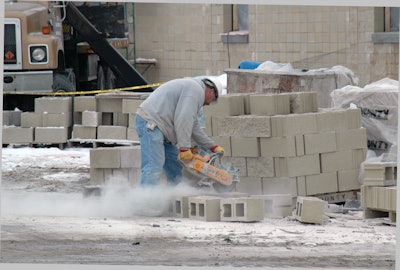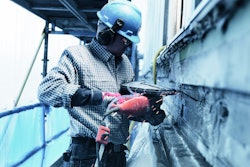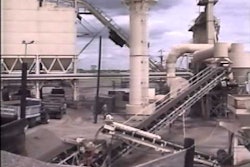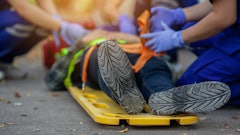
Farming is like construction in that it is a physically demanding, sometimes hazardous job. It has taken its toll on my dad, a third-generation dairy farmer whose knees and back are all but ruined. But what slows him down the most is farmers’ lung — lungs damaged through repeated exposure to fine dust when handling feed and other organic materials. The irreversible condition makes even the simplest physical activities, including breathing, more difficult.
Construction workers face a similar health risk. The most common culprit is crystalline silica, a compound found in sand, quartz, flint, slate and other elements. Silica isn't hazardous until it's airborne, like when it is crushed, ground or cut with a saw.
Exposure to airborne crystalline silica can put workers at risk of developing silicosis, an incurable disease caused by accumulated silica in the lungs. Scar tissue forms around the embedded crystals, reducing the lungs’ ability to transfer oxygen to the blood.
Fortunately, most construction firms take the necessary steps to minimize exposure for their workers. OSHA requires that employers “implement the best possible permanent solution” for reducing and/or eliminating crystalline silica dust. These requirements, coupled with improved awareness of the hazards of silica exposure, are helping to reduce incidence of silicosis.
Yet not all contractors take the risks seriously. Just this spring, we heard from a concrete saw operator frustrated by his employer’s lack of action in controlling silica dust. Even after bringing his concerns to his supervisor’s attention, nothing was being done to control the dust or protect the saw operator and nearby workers. The operator felt backed into a corner — should he report the issue and risk his livelihood or continue to do his job and risk his life?
No employee should be put in this position. It is the employer’s responsibility to reduce jobsite safety hazards wherever possible.
If you aren’t already doing so, evaluate your jobs to determine how much silica or other dust is airborne during specific operations (concrete cutting, demolition, handling materials). What steps can be taken to control dust levels (wet cutting, vacuum systems, water trucks)? If necessary, which types of respiratory protection should be applied? Train your workers on when and how to properly protect themselves.
Dust can kill; at best, it will cut your quality of life. Take it from someone who’s seen it firsthand. Then take whatever steps are necessary to protect yourself and your workers.
You can find tips to enhance safety on your sites in Construction Zone Safety and IPAF Elevating Safety, included with this issue, as well as in the Safety section of ForConstructionPros.com.




















